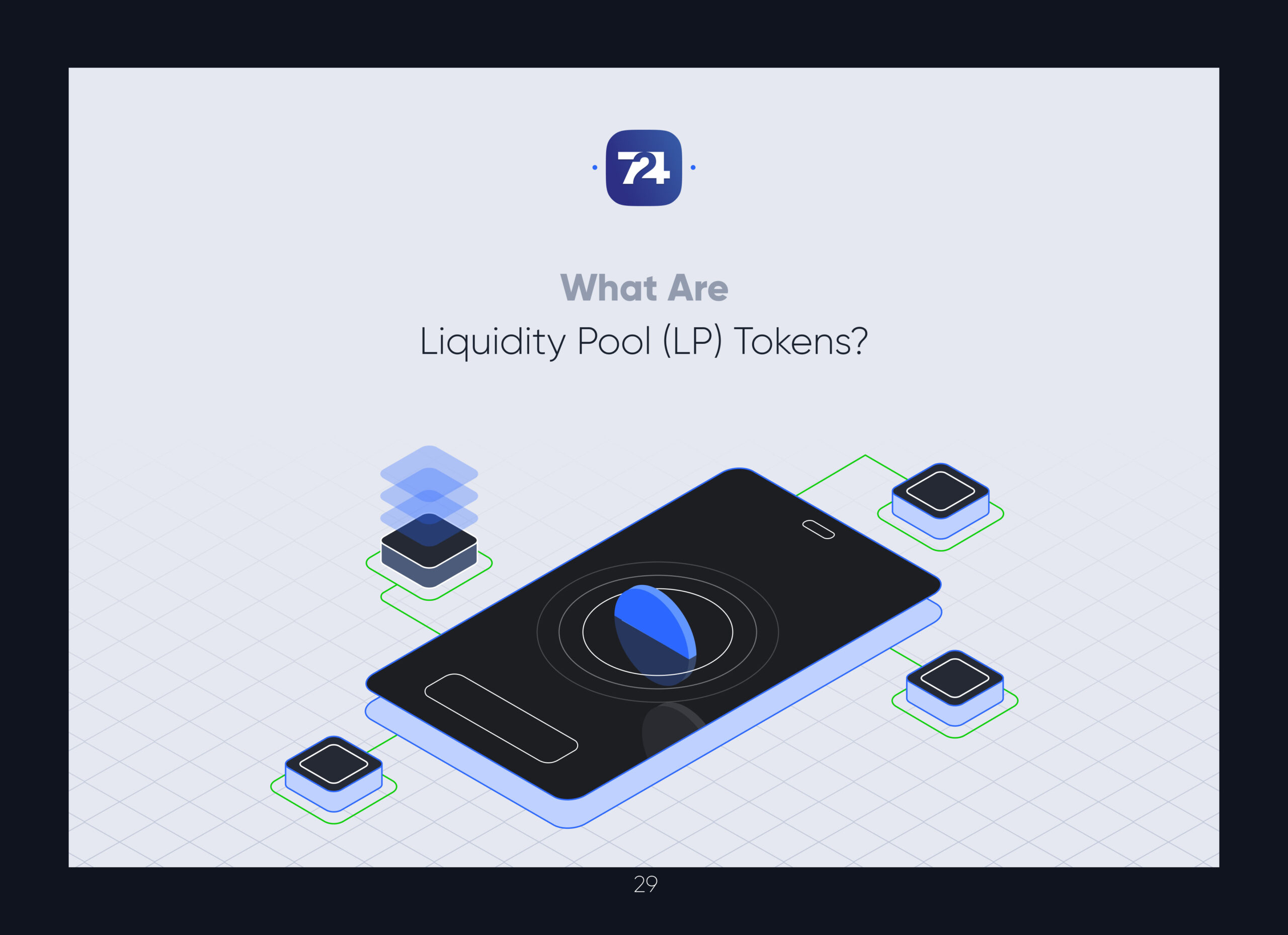What Are Liquidity Pool (LP) Tokens?
In the ever-evolving landscape of decentralized finance (DeFi), liquidity pools and their corresponding tokens play a crucial role in ensuring the smooth functioning and liquidity of decentralized exchanges (DEXs). To understand the significance of Liquidity Pool (LP) tokens, it is essential to delve into the mechanics of liquidity pools, their advantages, and how LP tokens work within this framework.
Understanding Liquidity Pools
Liquidity pools are fundamental to the operation of decentralized exchanges, which differ from traditional centralized exchanges. In a centralized exchange, liquidity is provided by market makers who facilitate trades by maintaining buy and sell orders. In contrast, decentralized exchanges rely on liquidity pools, which are collections of funds locked into a smart contract. These funds are provided by users, known as liquidity providers (LPs), who contribute their assets to the pool.
When users trade on a DEX, they are essentially trading against the liquidity in these pools rather than directly with another user. This mechanism allows for continuous liquidity and the ability to trade assets without the need for a centralized order book. The liquidity pool model helps mitigate issues such as slippage, which is the difference between the expected price of a trade and the actual executed price, especially in markets with low liquidity.
Role of Liquidity Providers (LPs)
Liquidity providers are incentivized to contribute their assets to liquidity pools by earning a portion of the transaction fees generated by trades within the pool. These fees are distributed proportionally to the liquidity providers based on their share of the total pool. By providing liquidity, LPs enable the decentralized exchange to function smoothly, offering traders the ability to buy and sell assets at fair market prices.
Introduction to LP Tokens
When a liquidity provider contributes assets to a liquidity pool, they receive LP tokens in return. These tokens represent the provider’s share of the pool and can be seen as proof of ownership. The value of LP tokens is directly linked to the assets within the pool, and their quantity is proportional to the amount of liquidity provided.
LP tokens serve multiple purposes:
- Proof of Ownership: They provide a verifiable record of the amount of liquidity a provider has contributed to the pool.
- Earning Rewards: Holding LP tokens entitles the provider to a share of the transaction fees generated by the pool.
- Liquidity Removal: LP tokens can be redeemed to withdraw the underlying assets from the pool.
Mechanics of LP Tokens
To understand how LP tokens function, it is helpful to examine the process of providing liquidity and receiving LP tokens. Let’s consider an example involving a popular decentralized exchange like Uniswap.
- Providing Liquidity:
- A user decides to provide liquidity to an ETH/USDT pool on Uniswap.
- The user contributes equal values of ETH and USDT to the pool, say 1 ETH and 3,000 USDT.
- In return, the user receives LP tokens representing their share of the pool.
- Earning Fees:
- As trades occur within the ETH/USDT pool, a 0.3% fee is charged on each transaction.
- These fees are accumulated in the pool and are distributed to all liquidity providers proportionally based on their LP token holdings.
- Redeeming Liquidity:
- If the user decides to withdraw their liquidity, they can redeem their LP tokens.
- The smart contract calculates the user’s share of the pool and returns the equivalent amount of ETH and USDT.
- Any accumulated fees are also included in the withdrawal.
The value of LP tokens fluctuates based on the performance of the underlying assets in the pool and the volume of trades generating fees. This dynamic nature of LP tokens makes them an attractive option for liquidity providers seeking to earn passive income.
Benefits of LP Tokens
LP tokens offer several benefits to both liquidity providers and the broader DeFi ecosystem:
- Enhanced Liquidity: By incentivizing users to contribute assets to liquidity pools, LP tokens ensure that DEXs have sufficient liquidity to facilitate smooth trading experiences.
- Passive Income: Liquidity providers earn a share of transaction fees, creating an opportunity for passive income generation.
- Decentralization: LP tokens align with the decentralized ethos of DeFi, allowing users to participate in and benefit from the ecosystem without relying on centralized intermediaries.
- Flexibility: LP tokens can be used in various DeFi applications, such as collateral for loans or yield farming strategies, enhancing their utility beyond simple proof of ownership.
Risks Associated with LP Tokens
While LP tokens offer numerous advantages, they also come with inherent risks that liquidity providers should consider:
- Impermanent Loss: This occurs when the value of the assets in the pool diverges from the initial deposit value, potentially leading to reduced returns compared to holding the assets separately.
- Smart Contract Risks: As with any DeFi protocol, there is a risk of smart contract vulnerabilities that could result in the loss of funds.
- Market Volatility: The value of LP tokens is subject to the volatility of the underlying assets, which can affect the overall value of a liquidity provider’s holdings.
Conclusion
Liquidity Pool (LP) tokens are a cornerstone of the decentralized finance ecosystem, enabling the seamless operation of decentralized exchanges by providing the necessary liquidity. They offer liquidity providers a way to earn passive income through transaction fees while maintaining proof of ownership over their contributed assets. However, potential liquidity providers should be aware of the associated risks and conduct thorough research before participating in liquidity pools.
As DeFi continues to grow and evolve, LP tokens will likely play an increasingly significant role in shaping the landscape of decentralized finance, offering new opportunities and challenges for participants in this innovative financial ecosystem.
